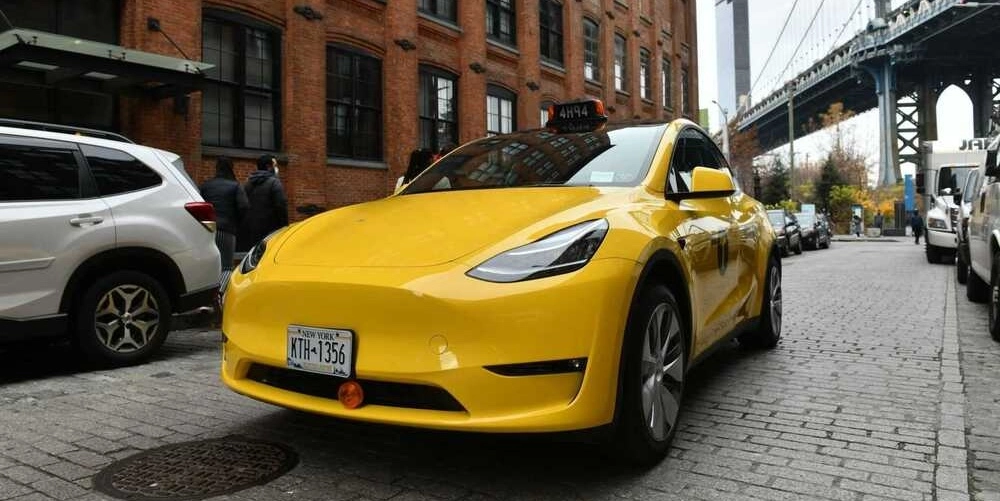In a bid to align with New York City’s ambitious climate policies, ride-sharing giants Uber and Lyft are gearing up to transition their fleets entirely to electric vehicles by 2030.
However, this move is not without its challenges, particularly for Tesla owners in the city.
New York City authorities, once considered stringent and resistant to EV adoption, issued 10,000 new licenses last year, contributing to a surge in Tesla cars being utilized by hired drivers.
This shift, aimed at reducing private car ownership and promoting a more sustainable future, has resulted in a growing demand for Tesla’s fast chargers in the city.
Responding to the increased congestion at its charging stations, Elon Musk’s company has implemented a “congestion fee,” charging drivers an extra dollar per minute for charging beyond 90%.
The hope is that this will encourage shorter charging sessions, especially considering the slower charging rate during the final 10%.
Despite Tesla’s efforts, the situation highlights a short-term solution for an impending problem.
With Uber and Lyft aiming to transition 78,000 vehicles to EVs within six years, there is a pressing need for more charging infrastructure in New York City.
The charging challenges faced by ride-sharing companies are not unique to NYC.
In Oslo, where 88% of newly licensed cabs were electric last year, the city has managed the transition smoothly, boasting robust infrastructure and introducing innovative inductive taxi charging.
Similarly, Amsterdam has been an early adopter of Tesla taxis, with designated charging spots at Schiphol Airport since 2014.
In a forward-looking move, the Royal Schiphol Group plans to install 10,000 EV charging stations at its airports by 2030.
Another approach to address the charging gap is taxi operators building their charging stations.
Dantaxi in Denmark, in collaboration with E.On, installed a large charging station in Copenhagen capable of supplying up to 400 e-taxis.
In NYC, Tesla cab service Revel is taking matters into its own hands by installing charging stations for its fleet, which are also open to other operators.
Revel reports a significant increase in charger usage over the last two months, attributing it to the growing number of ride-share drivers opting for electric vehicles.
However, while companies like Revel are actively involved in the physical side of charging infrastructure, major players like Uber and Lyft have yet to make significant strides.
While both have facilitated deals for drivers to purchase electric cars under favorable conditions, public charging infrastructure remains largely unaddressed.
Looking beyond the U.S., a notable example comes from China, where battery manufacturer CATL and the Chinese ride-sharing equivalent, Didi Chuxing, recently joined forces to build battery swapping stations specifically for cabs, showcasing a highly integrated approach to tackle the EV charging dilemma faced by ride-sharing services.
As ride-sharing companies accelerate their transition to electric fleets, the need for robust and widespread charging infrastructure becomes increasingly evident.
Cities worldwide must prepare for the surge in demand for charging stations, exploring innovative solutions to ensure a seamless transition to sustainable transportation.







